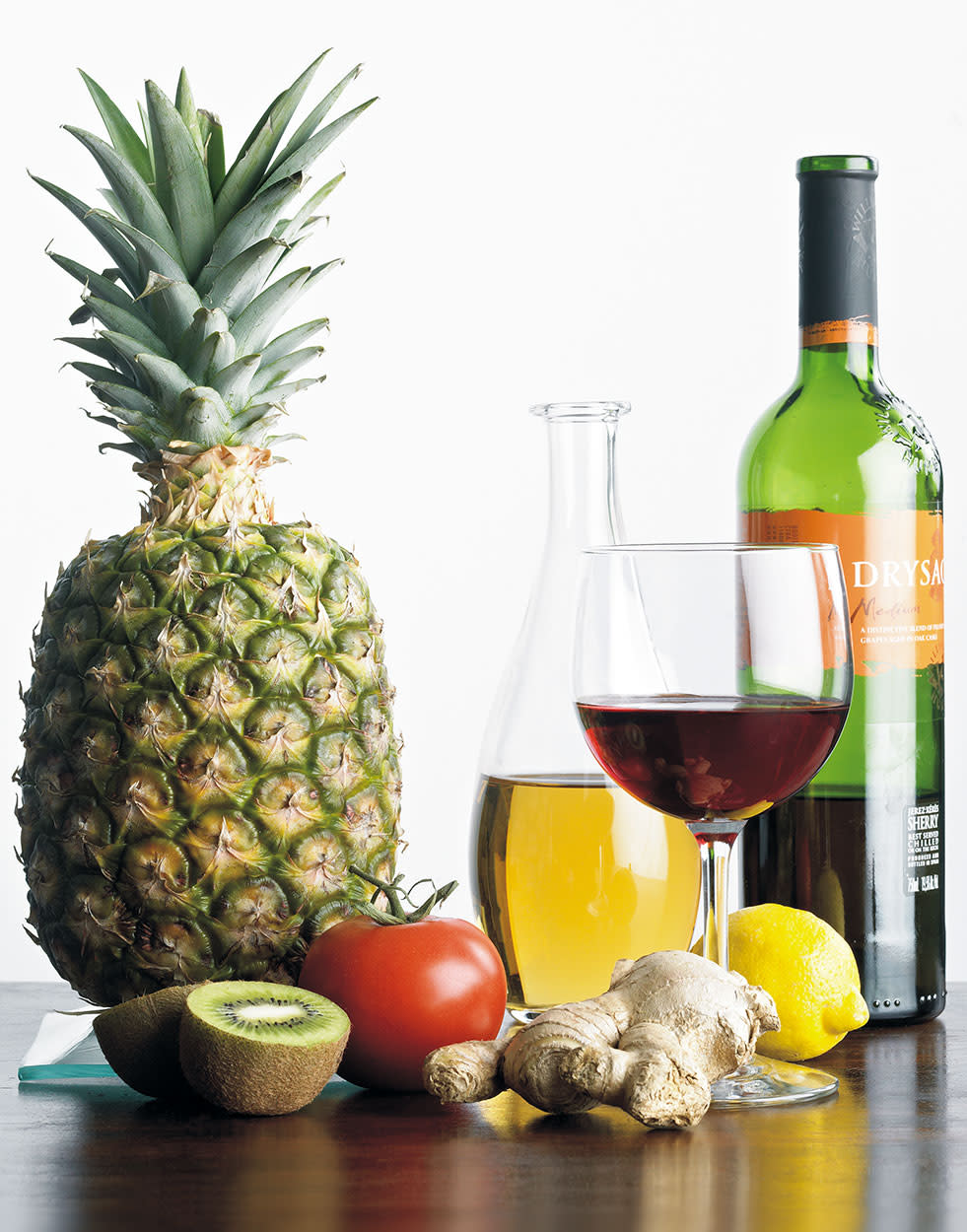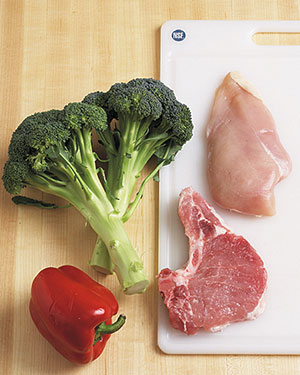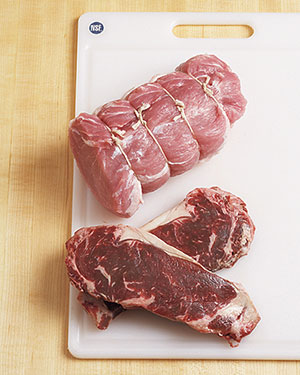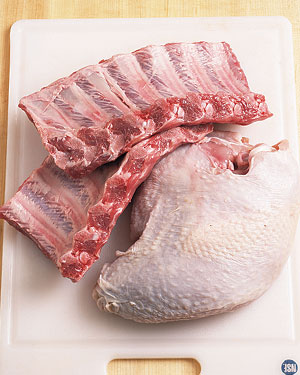How to Flavor & Tenderize Meat and Vegetables with Marinades
Look around your kitchen, and you’ll see everything needed to add extra layers of flavor or to tenderize your favorite meal — vinegars, juices, milk, vegetables, spices, even wine. In this step-by-step tutorial we explain all that you should know about marinades and how they work . . . while you relax.

Marinades
With bottles and bottles of marinades lining grocery-store shelves, it’s obvious that marinating is an effortless way to flavor foods. Many brands promote exotic ingredients and ethnic flavors, while some tout the addition of natural enzymes for tenderizing meat. It’s safe to assume that most marinades work; and they do — up to a certain point. And that usually is a point in time.
Marinating Agents
Two broad categories of ingredients aid in penetrating food to flavor it — acids and enzymes. Although these can sound somewhat off-putting, both naturally occur in many foods that we regularly consume.
Acids: These include vinegar, citrus juices, and alcohol. Acidic marinades tenderize meats by unraveling the proteins in muscle, which results in a “netting” of the marinade flavors.
Enzymes: These are found in roots and fruits such as gingerroot and papaya. Papain (the active tenderizing agent in papaya and pineapple) is a common ingredient in marinades. Enzymes break down tissue by digesting its proteins.
Timing is Everything
With either acids or enzymes, it comes down to what you’re marinating and how much time the surface of the food is in contact with the marinade. Too long in an acidic marinade, and the acids will reverse course, actually tighten the proteins, and squeeze out moisture, toughening the meat. (Seafood is particularly vulnerable to this.) The surface of food marinated too long in an enzymatic solution can become mushy and mealy, like the flesh of a bruised apple.
What Works Best
To flavor: An acidic marinade commonly is used to marinate meats and vegetables, quite often with some enzyme involved. Studies show that monounsaturated fats, like olive oil, will carry marinades into meat faster but not any deeper.
To tenderize: Dairy products such as milk, yogurt, and buttermilk are mildly acidic, but it’s believed that their calcium is the active agent involved in tenderizing meats. Calcium is thought to cause naturally occurring enzymes in meat to begin breaking down muscle tissue.
Marinating Time Depends on the Food
Adopt these times as general guidelines, not hard-and-fast rules. Marinating depends on such variables as strength of concentration of the acids or the enzymes, type of meat, and—most important—your taste.

15 TO 30 MINUTES Small open-textured foods, like shellfish, fish fillets, cubed meat, and such tender vegetables as zucchini

1 TO 3 HOURS Thin cuts of meat, boneless chicken breasts, pork chops, thinner steaks, and hearty vegetables such as broccoli.

2 TO 6 HOURS Thicker cuts of chops and steaks, roasts, whole chickens, and bone-in meats such as leg of lamb.

6 TO 12 HOURS Big, tough cuts of meat, like ribs, pork shoulder, beef rounds, whole turkeys, and fresh or smoked hams.
Product Recommendations
Interested in cooking? Need some supplies?
Check out some of the tools we like. All products featured on Cuisine at Home are independently selected by our editors; we may earn an affiliate commission from qualifying purchases through our links.
